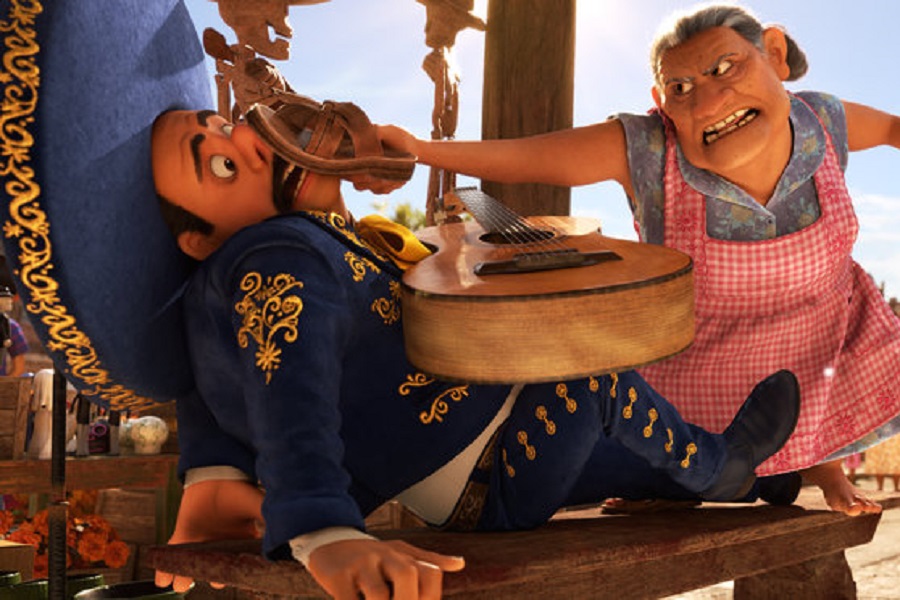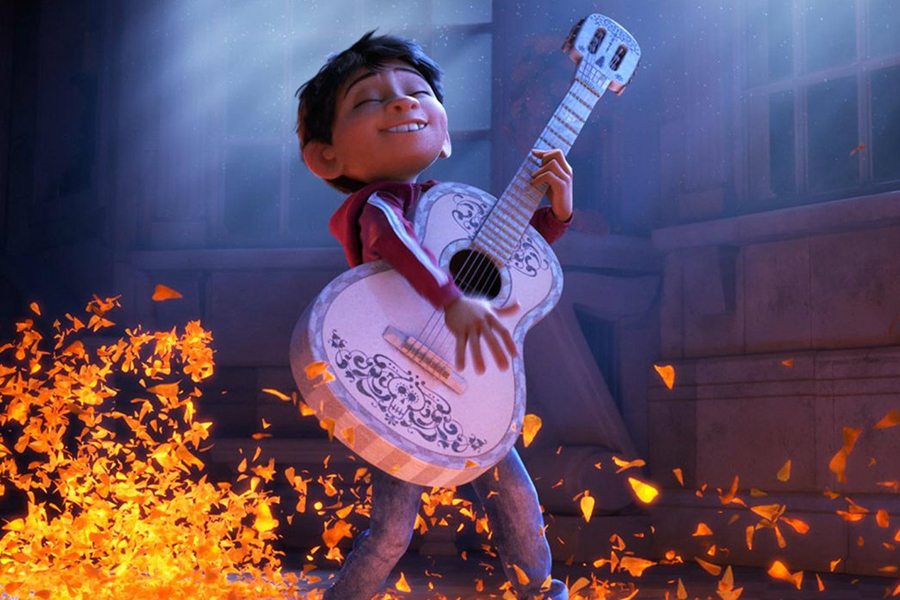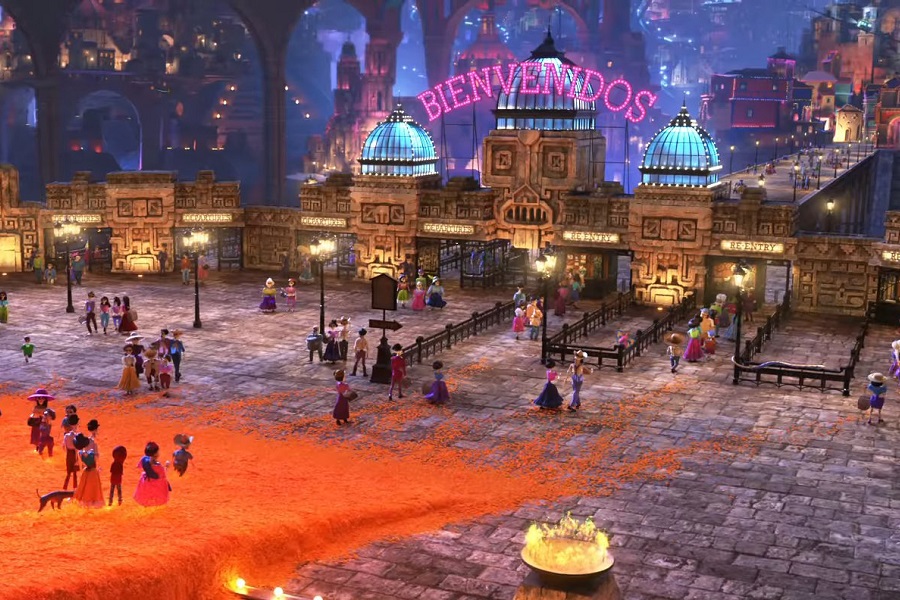The world of animated films can be a tough racket. After taking a gamble on The Good Dinosaur
and spinning their wheels off the track with Cars 3, Pixar, a name long synonymous with success is in need of a big hit. While no families are likely to turn away from an opportunity to see the next big thing from the mega-studio, a slight pervading sense of malaise may have started to seep through the cracks. Thankfully Coco is filled with colorful designs and a genuinely moving story to help cover-up the majority of its short comings.
Bursting onto the screen with a deliriously inventive prologue done entirely in the style of papel picado decorations, Miguel (Anthony Gonzales) narrates the story of his family’s history. Long ago, his great-great grandmother had her heart broken, blaming music as the cause. Instead of allowing this to ruin her, she devoted herself entirely to her family’s needs, cursing all melodic melodies. Naturally, Miguel must hide his secret love affair with music, or else face the wrath of his almost tyrannical Abuelita (Renee Victor).

Abuelita cares more about honoring those past, than the future generation standing directly before her. Because of this, Miguel hides away in the attic, where he he strums a makeshift guitar, before the shrine he’s erected to his idol, Ernesto De La Cruz (Benjamin Bratt). So enraptured is he with Cruz, that he’s edited together the best of the musicians acting and singing career.
When a music contest is announced in town the town square, Miguel sees this as a chance to finally prove his skills to his family. Desperate for a way to express the music inside him, he attempts to borrow the greatest relic in town, De La Cruz’s guitar. The first strum of that magical guitar changes the whole dynamic of Miguel’s world, as he sends him reeling, over into the spirit world.
In truth, the opening in Santa Cecilia is the weakest part of the film. While the family dynamic has a nice quality to it and the educational introduction to Dia Los Muertos necessary to the story, it comes off as rather pedestrian. Once it crosses over into the land of the dead though, Coco truly takes off on a dizzying and splendidly inventive adventure.

It cannot be stressed enough how awe-inspiring the city of the dead Pixar has created is. Not only is it massive, but there are so many pieces that feel alive and vibrant. This also goes hand in hand with the mechanics of the world itself. Instead of passports, spirits are allowed to cross over and visit their families as long as their picture is displayed on an ofrenda in the land of the living. In a world where money has no value, being remembered is it’s own form of currency.
After reuniting with several deceased family members,Miguel sets about getting back home with the blessing of a relative. If he doesn’t do so before sunrise, he’ll be stuck in the spirit world for the rest of his days. His great-great grandmother offers her assistance, in exchange for Miguel swearing music off forever. Being an obstinate young dreamer, Miguel refuses the offer, instead darting off in the hopes that a fellow musician, such as De La Cruz can help him.
He ends up teaming with the desperate Hector (Gael Garcia Bernal). He agrees to help Miguel on his journey, in exchange with placing his picture on any alter, before he fades away forever. Along their journey they run across a menagerie of alebrijes (animal spirit guides), a shanty town for the mostly forgotten and Frida Khalo. Just as things seem their brightest, the third act moves into darker territory, as an antagonist emerges with the callous bluster of Disney villains from long ago.

In the best of narrative traditions Coco immerses itself in the act of showing, rather than just telling. Soaking up the embarrassment of riches on display is overwhelming at first, but in the best possible sense. Other CG kid’s films are content merely staying in their lane, or adhering to a somewhat simplistic style. Pixar understands the necessity in absolutely WOW-ing an audience. For that alone, Coco is more than worth the ticket price.
At the end of the day, the story boils down to a compassionate look at family, legacy and music, lensed through a colorful tapestry of Mexican culture and artist whimsy. More importantly, it’s about accepting what’s in your heart without turning your back on the things that are most important. it doesn’t reach the same heights of director Lee Unkirk’s previous work, Toy Story 3, there’s sure to be a few misty eyes as the credits begin to roll. Coco may fall into the trap of predictability for a stretch in the later half, but the heart, energy and passion injected into every aspect of the film, allow it to soar.



